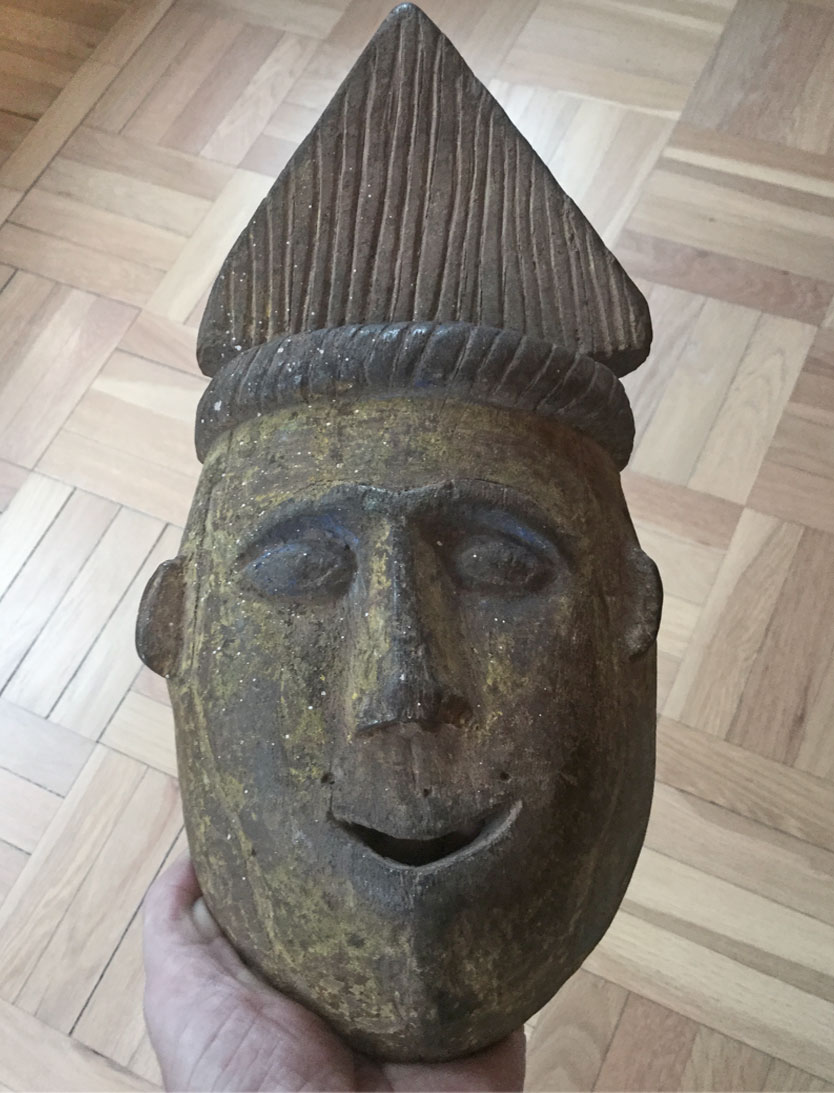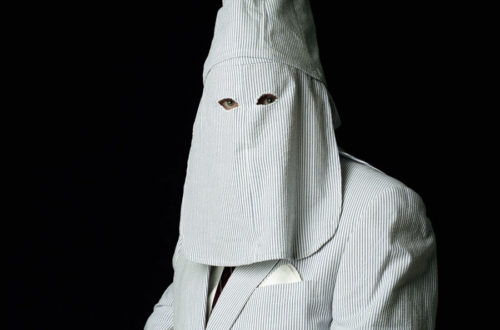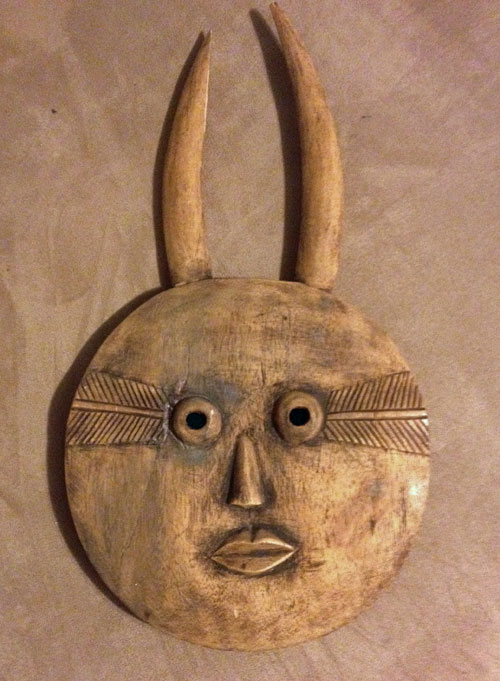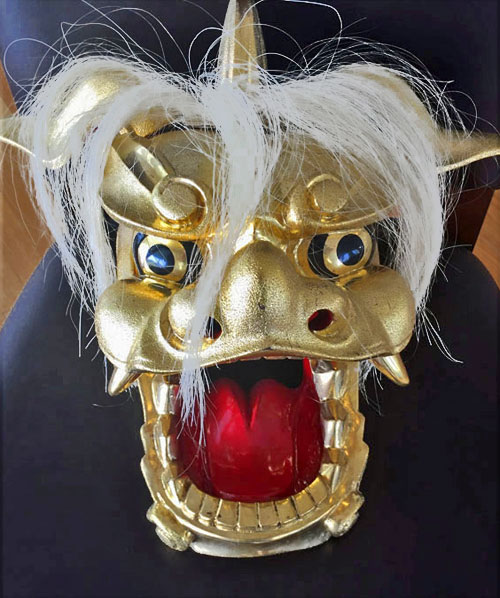 Q: I was wondering if anyone could help with this mask from India. Any insights would be appreciated. It was bought in Kochi (Kerala) in 2008 from one of the main antiques stores in the old town, but sadly not much more information survived when it was passed on to me. The mask still carries faded but quite vivid yellow on most parts of the face and purple on the eyelids and headband. There is an indentation from the headgear down all around the face, as well as three dotted indentations above the lips. Behind the ears are two holes, presumably for hanging the mask. The back has two written markings, which I assume were put there by the seller. The mask measures 31cm in height and 14.5cm in width. The material is wood with a V-shaped split at the chin. Any help in identifying more information about this mask, or pinpointing provenance etc, would be much appreciated. Bram, 1603
Q: I was wondering if anyone could help with this mask from India. Any insights would be appreciated. It was bought in Kochi (Kerala) in 2008 from one of the main antiques stores in the old town, but sadly not much more information survived when it was passed on to me. The mask still carries faded but quite vivid yellow on most parts of the face and purple on the eyelids and headband. There is an indentation from the headgear down all around the face, as well as three dotted indentations above the lips. Behind the ears are two holes, presumably for hanging the mask. The back has two written markings, which I assume were put there by the seller. The mask measures 31cm in height and 14.5cm in width. The material is wood with a V-shaped split at the chin. Any help in identifying more information about this mask, or pinpointing provenance etc, would be much appreciated. Bram, 1603
A: Only the buyer can do provenance. Unfortunately I can’t do much more because I know very little about Indian masquerade. Even though there are many carnivals and parades in the cities, plus the celebrations of numerous ethnic groups in small towns, the second largest country in the world exports very few masks, and no books on the subject.
This mask may be old and have an interesting story. Wouldn’t it be nice if an Indian would share some information with us?






2 Comments
Aaron Fellmeth
There are three general categories of Indian masks: Chhau masks from Jharkhand and West Bengal, Buddhist masks from the Nepalese border, and tribal masks, also from the Nepalese border. This doesn’t resemble any of these, and there are no well-known masquerading traditions in Kerala. It may be from a very small local tradition, but the absence of eye holes suggests it is a decorative mask for tourists. There are scholarly articles on Indian masquerade, but none shows or mentions anything like this. Either you found a unique artifact or, more likely, decorative folk art.
Bob Ibold
This mask is probably decorative art for tourists. What you say will help direct collectors to areas rich in authentic masks. However, with 1.3 billion people, India has 22 separate ethnic groups speaking languages other than Hindi, and they are all displaying varied cultures and religions. I think all of these separate groups probably practice masquerade. Collectors and curators know very little about the folk art of this complex sub-continent.